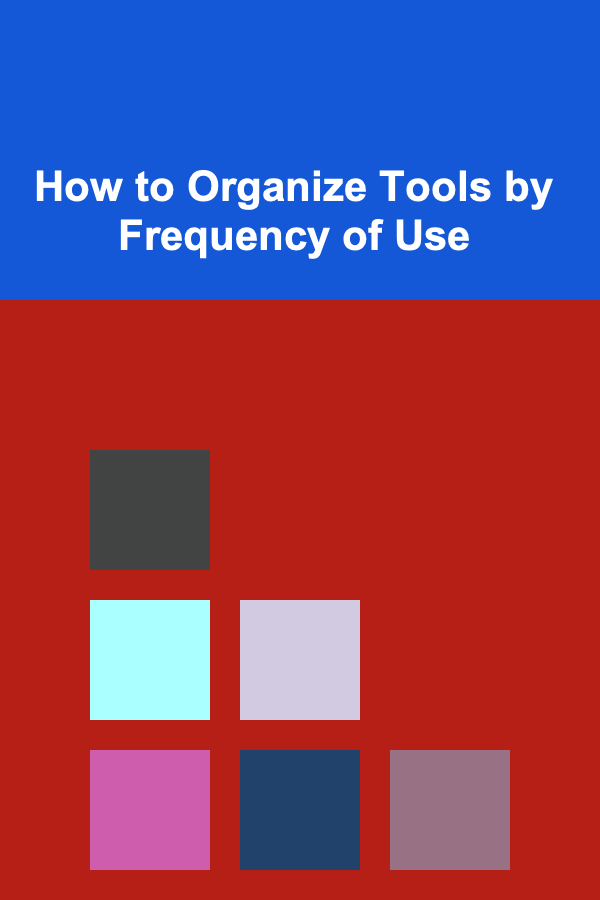
How to Train Your Soccer Reflexes Like a Pro
ebook include PDF & Audio bundle (Micro Guide)
$12.99$8.99
Limited Time Offer! Order within the next:

Soccer, as one of the most popular and fast-paced sports in the world, demands more than just skill with the ball and physical fitness. One of the most crucial aspects of high-level play is reflexes. Reflexes determine how quickly you can react to changes in the game, such as a sudden pass, an opponent's dribble, or a fast shot on goal. In this article, we will explore how to train your soccer reflexes like a pro, with a focus on various drills, techniques, and principles that can help improve your reaction times, decision-making, and overall game performance.
The Importance of Reflexes in Soccer
In soccer, your reflexes affect your ability to respond to situations that require quick decision-making and action. Whether you're defending, attacking, or goalkeeping, being able to react in an instant can be the difference between winning and losing. Reflexes enable players to anticipate plays, intercept passes, make last-second tackles, and shoot on target under pressure.
1. Reflexes for Attackers
For attackers, quick reflexes are vital for reacting to passes, adjusting to the goalkeeper's movements, and making split-second decisions on when to take a shot. Whether it's a sudden through-ball or a quick counterattack, attackers need to be able to make decisions quickly while maintaining control of the ball.
2. Reflexes for Defenders
Defenders rely heavily on their reflexes to react to attacking threats. Whether it's a fast break, a cross into the box, or a player trying to get past them, defenders need to react quickly to maintain positioning and prevent goals. Good reflexes can help a defender make critical interceptions, block shots, and respond to unexpected offensive maneuvers.
3. Reflexes for Goalkeepers
Goalkeepers are often considered the most reactive players on the field. They need to react to shots, crosses, and headers that come at them at high speeds. Their reflexes must be sharp to dive, block, or catch the ball. A goalkeeper's ability to read the game and anticipate the opponent's next move can make or break their performance.
Key Factors That Influence Reflexes
Before diving into specific drills and exercises, it's important to understand the key factors that influence soccer reflexes:
1. Mental Awareness and Focus
Your ability to react quickly in soccer depends on how aware and focused you are during the game. Players with sharp mental focus are more likely to anticipate moves, predict plays, and react swiftly. Maintaining awareness of the game around you will enable you to react not just to what is happening, but also to what is likely to happen next.
2. Peripheral Vision
Peripheral vision allows you to notice movements and changes in the environment without directly looking at them. In soccer, good peripheral vision is essential for reacting to fast passes, open spaces, and changes in the position of players. Training your peripheral vision will enhance your ability to make decisions without losing track of the action happening all around you.
3. Physical Agility and Speed
Your body's ability to move quickly and change direction plays a significant role in your reflexes. Agility training enhances your body's response time, enabling you to quickly adjust your position to intercept a ball or make a challenge. Speed drills also improve the time it takes for you to react and respond to game situations.
4. Decision Making Under Pressure
Sometimes, reflexes are not just about how fast you can react, but how well you can make the right decision in a short amount of time. Training to make decisions quickly under pressure can help you maintain control of the ball, pass effectively, or choose the best option when facing an opponent.
Training Drills to Improve Soccer Reflexes
The following drills and exercises are designed to enhance various aspects of your soccer reflexes. Consistent practice and a mix of different drills will help you improve your reaction time, agility, and decision-making on the field.
1. Ball Reaction Drills
1.1 Wall Pass Reaction Drill
- Objective: Improve reflexes and quick footwork.
- How to Do It: Stand a few meters away from a wall with a ball. Pass the ball against the wall and quickly react to where it bounces. Control the ball and pass it back immediately. The goal is to stay on your toes and react quickly to the unpredictable bounce of the ball.
- Variation: Increase the speed at which you pass the ball, or alternate between using your left and right feet.
1.2 Juggling with Quick Touches
- Objective: Improve touch and foot-eye coordination.
- How to Do It: Juggle the ball with quick touches, focusing on using the inside and outside of your feet. Try to keep the ball in the air for as long as possible while maintaining control. The quicker you react to the ball, the better your reflexes will become.
- Variation: Use smaller balls or a heavier ball to add difficulty.
2. Reaction Ball Drills
2.1 Reaction Ball Bounce Drill
- Objective: Improve reaction time and agility.
- How to Do It: Use a reaction ball, which is designed to bounce in unpredictable directions. Drop the ball from a height and react as quickly as possible to catch or control it. This will help you develop fast reflexes when dealing with sudden changes in direction.
- Variation: Perform this drill while wearing ankle weights to increase the challenge and improve your lower body strength.
2.2 Two-Ball Reaction Drill
- Objective: Enhance multi-tasking and coordination.
- How to Do It: Throw two balls in opposite directions (for example, one to your left and one to your right) and try to catch them both simultaneously. This drill will help you improve your ability to react to multiple stimuli at once, similar to how a soccer player might need to react to a cross and a shot at the same time.
3. Agility Drills for Reflexes
3.1 Cone Drills
- Objective: Improve agility and quick decision-making.
- How to Do It: Set up cones in a zigzag pattern and sprint through them while constantly changing direction. After completing the first set, vary the speed or direction to increase the challenge. This helps simulate the sudden changes of direction required in soccer when reacting to an opponent's movement or a loose ball.
- Variation: Have a partner call out directions or commands while you navigate the cones to increase unpredictability.
3.2 Ladder Drills
- Objective: Increase foot speed and coordination.
- How to Do It: Use an agility ladder and perform a variety of footwork drills, such as high knees, lateral steps, or quick feet. Focus on quick movements and making precise foot placements to develop fast and controlled reflexes.
- Variation: Add a ball at the end of the ladder and finish by controlling or passing it after the ladder drill.
4. Goalkeeping Reflex Drills
4.1 Shot Reaction Drill
- Objective: Improve reaction time and shot-blocking abilities for goalkeepers.
- How to Do It: Have a partner shoot the ball at you from various angles and distances. As the ball approaches, react quickly and either catch, block, or parry the shot. This drill will improve your ability to react to fast shots on goal.
- Variation: Increase the intensity by having multiple shots taken in rapid succession.
4.2 Cross Reaction Drill
- Objective: Train goalkeepers to react to crosses and aerial balls.
- How to Do It: Have a partner cross the ball into the box from different positions. As the ball comes in, react quickly and attempt to either catch or clear the ball. Work on your positioning to ensure you are always ready to react to crosses.
- Variation: Practice coming off the line to claim high crosses or diving to stop low crosses.
Mental Techniques to Improve Reflexes
In addition to physical drills, improving your soccer reflexes also involves sharpening your mind. Here are some mental techniques that can help boost your reflexes:
1. Visualization Techniques
Visualization can be an effective way to train your reflexes off the field. Visualize yourself in different game situations, reacting to opponents' movements, intercepting passes, or scoring goals. This mental practice will prepare your mind to react faster when similar situations occur during a match.
2. Reaction Time Apps and Games
There are several apps and games designed to improve reaction time. These apps typically present visual or auditory stimuli that require you to react within a certain timeframe. Using these tools regularly can help improve your overall reaction speed.
3. Mindfulness and Focus Training
Practicing mindfulness and focus exercises, such as deep breathing and meditation, can help improve your ability to stay calm and concentrated under pressure. This, in turn, will allow you to react faster and more effectively during a match.
Conclusion
Training your soccer reflexes like a pro requires dedication and a variety of physical and mental practices. By incorporating drills that improve your reaction time, agility, and decision-making, you can become a more reactive player on the field. Whether you're an attacker, defender, or goalkeeper, sharpening your reflexes is essential for success. With consistent practice and mental focus, you'll be able to react faster, anticipate plays, and ultimately elevate your soccer performance.
Reading More From Our Other Websites
- [Trail Running Tip 101] Designing the Perfect Trail Run Routine for Maximum Mental Focus
- [Home Budget Decorating 101] How to Create Inexpensive Guest Room Ideas on a Budget
- [Skydiving Tip 101] Common Landing Mistakes and How to Avoid Them in Skydiving
- [Home Pet Care 101] How to Prepare Your Pet for a Pet Sitter: Minimizing Stress & Ensuring a Smooth Transition
- [Star Gazing Tip 101] From Meteor Showers to Planetary Alignments: Building a Personal Star-Gazing Calendar
- [Home Pet Care 101] How to Maintain a Healthy Diet for Your Pet at Home
- [Home Staging 101] How to Create a Cozy and Inviting Atmosphere Through Staging
- [Personal Investment 101] How to Use Technical Analysis for Better Stock Picking
- [Home Rental Property 101] How to Save Money on Houses for Rent: A Complete Guide
- [Home Budget 101] How to Budget for Home Insurance and Property Taxes

How to Maintain Your Home's Wooden Deck
Read More
How to Organize and Declutter Before Cleaning
Read More
How to Organize Tools by Frequency of Use
Read More
How to Use Mindfulness to Improve Financial Decisions
Read More
How to Write a Birth Plan That Reflects Your Wishes
Read More
How to Photograph Macro Wildlife: Insects and Small Creatures
Read MoreOther Products

How to Maintain Your Home's Wooden Deck
Read More
How to Organize and Declutter Before Cleaning
Read More
How to Organize Tools by Frequency of Use
Read More
How to Use Mindfulness to Improve Financial Decisions
Read More
How to Write a Birth Plan That Reflects Your Wishes
Read More